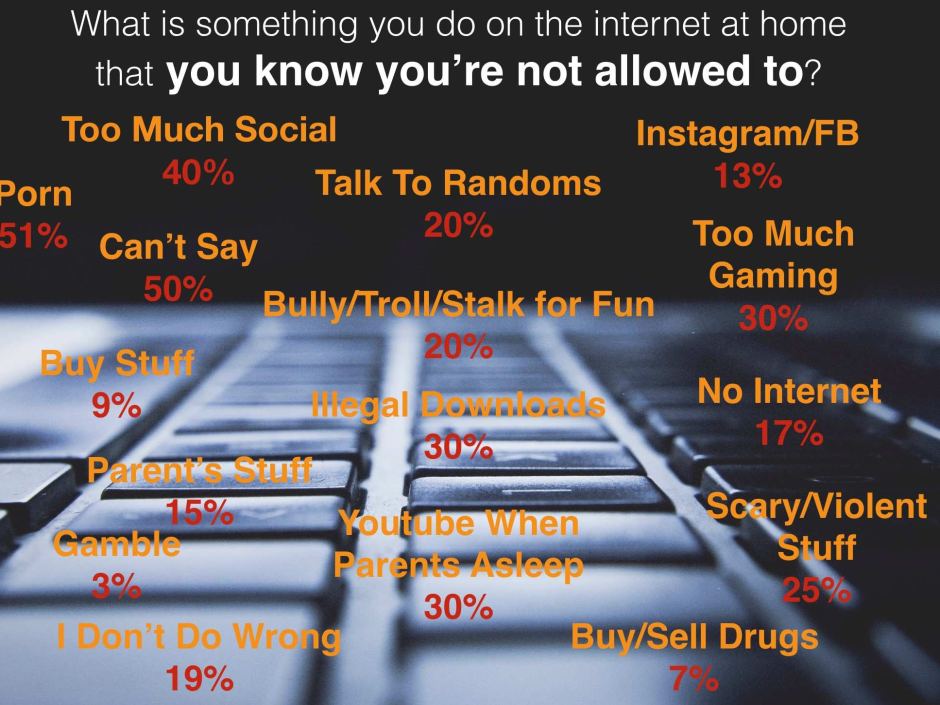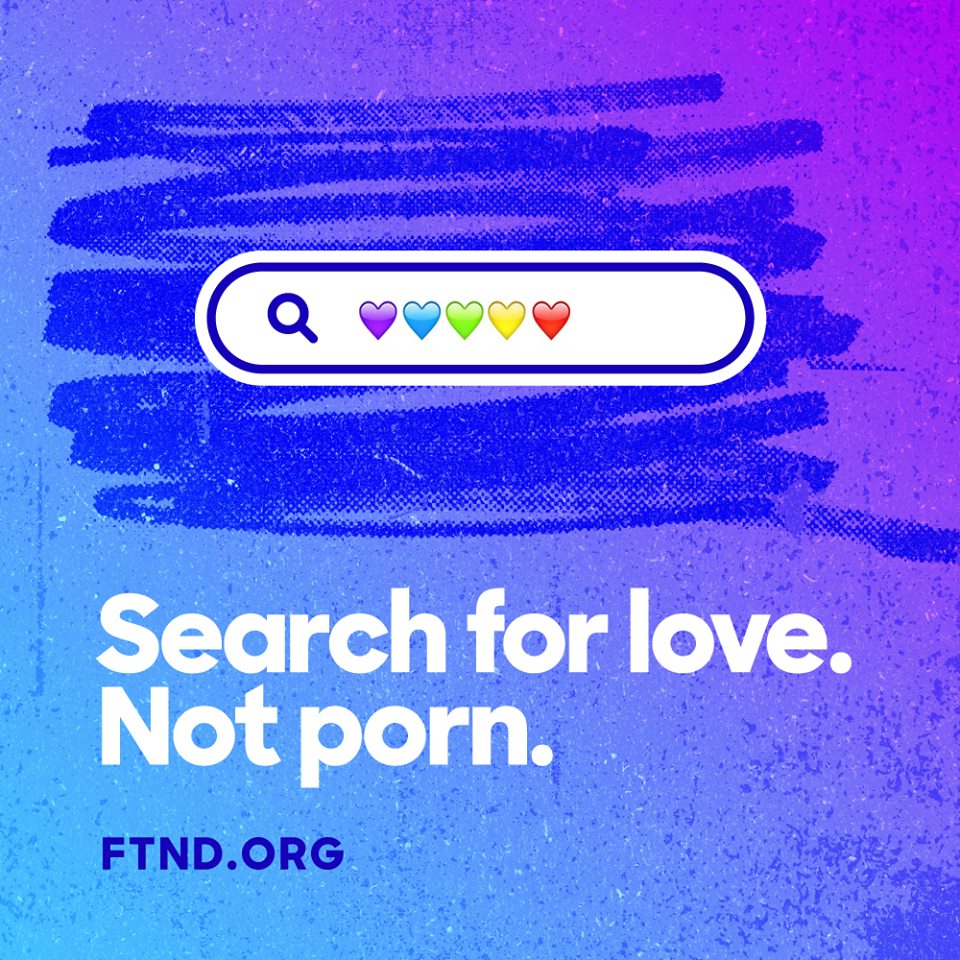Rachel Downie, the founder of anti-bullying website Stymie, surveyed more than 20,000 students over the last five years, asking “what’s something you do on the internet at home that you know you’re not allowed to do?”
In a recent report by ABC Sunshine Coast, the eye-opening results of her survey are sparking much-needed conversations about teens and what they’re seeing and doing online on the regular. Among the surprising stats? Parents are unaware of about 80% of what their teen engages in on the internet at home.
Take a look at these stats from the survey, and pay attention to what the largest number of students report doing:
Over half of the 20,000 students surveyed admit to watching porn—but we know that’s likely only scratching the surface. Downie said 51% of those surveyed, mostly boys, had consumed porn or other illicit material, while one-fifth of respondents admitted to bullying, trolling and stalking for fun.
Downie, an endorsed speaker with the Office of the eSafety Commissioner, has spoken with more than 100,000 students and thousands of parents delivering the anti-bullying Stymie program around the country.
Related: Exposing The Serious Porn Problem On Popular Social Media Platforms
She said parents often have no idea how far into toxic online habits their teens are. Including their porn habits.
“After every presentation, and it’s usually with mums, they want to come chat to me afterward about the fact that their 12, 13, 14-year-old son is addicted to pornography,” she said.
“I’m certainly not an advocate for banning everything because that’s not the world we live in, but I am a very strong advocate for your need to know what they’re doing,” she told ABC News.
Check out this sexting stat from her survey:
Not only are instances of sexting and revenge porn on the rise, it is prevalent in the lives of many of today’s teens and young adults as shown by this study’s results.
Another recent study showed that roughly 1 in 25 online Americans have either had explicit images of them shared without their permission, or have had someone threatened to post them. The same study also revealed that young people ages 15-29 are more likely to report being threatened, with 1 in 14 internet users under the age of 30 experiencing some form of revenge porn. Yikes.
So why the widespread revenge porn among the youth of today? The obvious answer: more sexting, more revenge porn.
A recent study found that at least 27% of teens are receiving sexts while almost 15% are sending them. A different study found that more than 1 in 10 teens are forwarding these sexts without consent, and roughly 1 in 12 teens reported having had sexts they sent shared without their permission. Crazy, right? And we know these numbers are just the start of what’s reported—there’s plenty going on under the surface that these reports haven’t touched on.
What does this all mean?
These numbers and stats confirm more of what we already know: porn is the norm for teens across the world.
A study done in 2008 found that 93% of boys and 62% of girls had been exposed to pornography in their early adolescent years. And considering that these numbers are from over 10 years ago, before the widespread use of smartphones, those stats are guaranteed to be much higher today.
Studies have shown that the average age of a child’s first exposure to porn is around 11 years old. However, we see that that age is rapidly falling with more kids learning how to use phones, tablets, and computers at earlier ages. In 2007, internet security company McAfee did a study on “cybersquatting” and found there is a 1-in-14 chance of a child typing in a misspelled URL and stumbling upon a porn site by accident.
So, what now?
While most every teen has seen porn or at least knows about it, not every teen knows about the harmful effects of this normalized habit.
We exist because every consumer deserves to know the scientifically proven harmful effects of porn and its negative impact on their brain, their relationships, and its connection to sexual exploitation and violence in our society. We believe that if everyone understood these harmful effects, they’d understand they deserve better than what porn has to offer, and ditch it for good. This is why our presenters fly around the world and share the harmful effects of porn in age-appropriate presentations to schools, universities, and communities.
Think of tobacco, and how smoking went from being celebrated and normalized to recognized as the harmful thing it is. Just like the Big Tobacco industry lobbied for years to hide the unflattering scientific truth behind their product, the porn industry would love for you to forget anything negative you’ve heard about their multi-billion dollar products, even if your sources are iron-clad peer-reviewed studies, credible sources, and stories from ex-performers. And also like Big Tobacco, the porn industry refuses to take responsibility for the harm, impact, and damage they’re directly causing as a result of their product.
But it’s only a matter of time before that all changes.
Naomi Wolf, a writer for New York Magazine, suggests that “you might want to rethink your constant access to porn in the same way that, if you want to be an athlete, you rethink your smoking. The evidence is in.”
We think Naomi is onto something, along with the rest of the scientific community that is telling us something very important about porn: it isn’t harmless.






